“The logic of the primitive Paschal Vigil is that a new age dawned with the appearance, death and resurrection of Christ. In preparation for the annual commemoration of that cosmic event, the liturgy revisited the pre-incarnational age through a rereading of key Old Testament passages that prefigure events of Christ’s incarnation.” (Paul Magdalino, The Old Testament in Byzantium, p. 71)
Holy Saturday is a day on which we contemplate the whole plan of God for our salvation from the beginning of creation. The Old Testament is read as prophecy of the New with each narrative not only foreshadowing and prefiguring the events in Christ’s own life but also being a typology of our own spiritual sojourn in Christ and into His Kingdom. There are 15 Old Testament lessons read during the Vespers-Liturgy which was originally part of the Paschal celebration. The words, events and prophecies of the Old Testament find both their fulfillment and full meaning in Christ’s own life, death and resurrection.
“The Old Testament gave us an eschatological interpretation of the Exodus, showing it to us as a type of the Messianic age. The New Testament proclaims that this typology has been fulfilled in Christ, who achieved the New Exodus foretold by the Prophets, by freeing men from the power of the Devil. The Fathers of the Church, while they uphold these two interpretations, are chiefly concerned to show that the Exodus is the type of those major factors in the life of the Church day by day, that is, the Sacraments through which the power of God continues to achieve man’s redemption, typified by the Exodus, and accomplished by Jesus Christ. The Fathers first of all show that the passage of the Red Sea and the eating of the manna are the type of Baptism and the Eucharist received on the anniversary day of the departure from Egypt, and then go on to show how this interpretation widens to include all the events of the Exodus.
It is one of the most important themes of early typology that the crossing of the Red Sea is a type of Baptism, and this will be more easily understood when it is remembered that Baptism was administered during the night of Holy Saturday, in the framework, that is, of the Jewish feast which recalled the departure from Egypt. The parallel between the historical event of the departure from Egypt and the mystical rejection of sin by the passing through the baptismal font forces itself upon us. The Liturgical connection between the water of Baptism and the water of the Red Sea is not just fortuitous: we can only insist once more on what was said of the Flood; the significance of the baptismal water lies not in it being a rite of purification, but a rite of initiation. In any rite of initiation there is always a certain ritual imitation of the historical event. Such was the case with Jewish baptism, which in the Christian era took the place of circumcision as the initiatory rite of proselytes to the Jewish faith. G. Foot-Moore writes: “this baptism was neither a real nor merely a symbolic purification: it was essentially a rite of initiation.” And the purpose of this initiation was to bring the proselyte through the same stages that the people of Israel had passed through at the time of the Exodus from Egypt. Even Jewish baptism them was an imitation of the crossing of the Red Sea and the baptism of the desert (Ex. 14:30).
We have seen that the New Testament certainly sees in the departure from Egypt a type of Baptism. St. Paul tells the Jews that their fathers “were all under the cloud, and all passed through the sea. And all in Moses were baptized in the cloud and the sea” (1 Cor. 10:2-11), and the Gospel of St. John shows us how the great events of the Exodus were types of the Christian sacraments.” (Jean Danielou, S.J., From Shadows to Reality, pp. 175-176).
As in every liturgical celebration in the Church – both sacraments and Feast days – we enter into Christ’s life and experience the world in Christ. We understand the Old Testament in Christ. We live our spiritual lives whether fasting or feasting in Christ. We are saved by His faith, for He is God’s faithful servant, chosen to give life to the world.
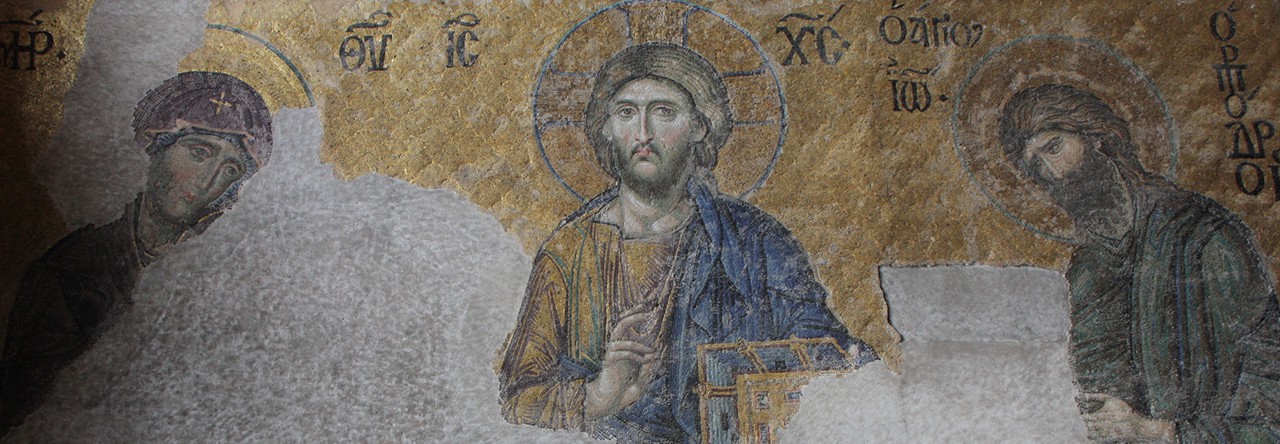
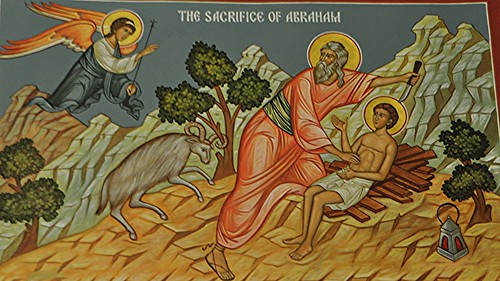
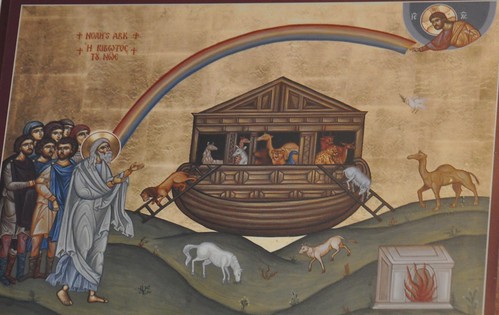
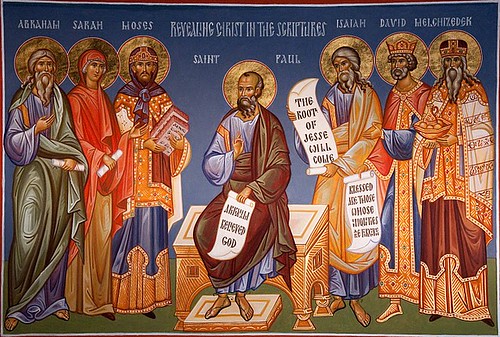
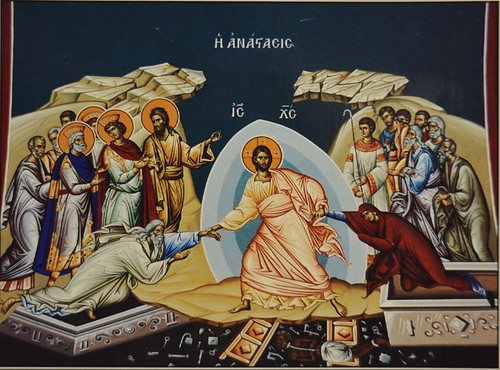
+
Christ is risen!
Fr. Ted,
I wanted to share with you the illustrated book I made on Christ’s descent to hades since your blog helped me in my research on the topic.
Here’s a link to the ebook: https://goo.gl/y8QGmT
Thank you again, keep up your work on this wonderful blog!